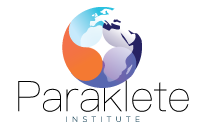Table of Contents
In project management, Scrum has emerged as a leading framework. It is a part of the Agile methodology and is known for its flexibility and efficiency. Yet, the success of Scrum largely depends on understanding and effectively playing the Scrum roles. These roles – the Scrum Master, the Product Owner, and the Development Team – form the backbone of any Scrum project. Each role has its unique responsibilities and challenges. It is crucial to understand these roles, their interplay, and their impact on the project’s success. In this comprehensive guide, we will explain all the scrum roles, exploring their dynamics and significance in the digital economy.
Understanding the Scrum Framework
Scrum is a framework for managing complex projects. It was initially developed for software development but has since been applied to other fields. Scrum is based on the principles of transparency, inspection, and adaptation, which are embodied in the Scrum roles, events or ceremonies, and artifacts.
The Scrum framework includes:
- Scrum Roles: Scrum Master, Product Owner, and Development Team
- Scrum Ceremonies (events): Sprint Planning, Daily Scrum, Sprint Review, and Sprint Retrospective
- Scrum Artifacts: Product Backlog, Sprint Backlog, and Potentially Shippable Increment
The Origins and Principles of Scrum
Scrum was introduced in the 1986 Harvard Business Review article “The New Product Development Game.” Ken Schwaber and Jeff Sutherland formalized it in the early 1990s. The Scrum framework is guided by empirical process control, or empiricism, which asserts that knowledge comes from experience and making decisions based on what is known.
Agile Methodology and Scrum’s Place Within It
Agile is a set of values and principles for software development under which requirements and solutions evolve through the collaborative effort of self-organizing cross-functional teams. Scrum is one of the most popular Agile frameworks. It provides tools and roles that work harmoniously to help teams structure and manage their work. To gain a deeper understanding of the Agile principles and practices underpinning Scrum, check out our comprehensive guide on Agile Methodology and its Benefits.
The Three Pillars of Scrum: Transparency, Inspection, and Adaptation
The Scrum framework’s three pillars are transparency, inspection, and adaptation. Transparency ensures that every aspect of the project is visible to those responsible for the outcome, including the process, the work in progress, and the product itself.
Transparency allows all Scrum team members to have a shared understanding of what is being worked on and why. Inspection involves regularly checking the product and the processes to detect undesirable variances.
In Scrum, inspection is not an afterthought or a phase at the end of a sprint. Instead, it is a continuous activity performed throughout the project. This allows the team to identify issues early and make necessary adjustments.
Adaptation is the final pillar of Scrum. When the team inspects the project and identifies aspects not working as expected, they adapt their plans or processes. This could involve changing their work, altering the product backlog, or redefining the product. Adaptation ensures that the team is constantly improving and optimizing their work.
Key Scrum Roles and Their Interplay
The Scrum framework has three key roles: the Scrum Master, the Product Owner, and the Development Team. Each role has a distinct set of responsibilities and contributes uniquely to the project’s success. The interplay between these roles is crucial for effective Scrum implementation and achieving the desired project outcomes.
The Scrum Master: Facilitator and Servant-Leader
They act as facilitators and servant leaders for the Scrum Team, helping them understand and implement Scrum principles and practices. The Scrum Master is not a traditional project manager but rather a coach and mentor for the team.
Responsibilities of the Scrum Master
- They ensure the team adheres to Scrum theory, practices, and rules.
- They help the team understand and enact Scrum and empirical product development.
- They remove impediments to the team’s progress.
- They facilitate Scrum events as requested or needed.
The Scrum Master also works with the Product Owner and the organization, helping them understand and adopt Scrum.
The Scrum Master’s Role in Scrum Ceremonies
Scrum ceremonies, or events, are integral to the Scrum framework. The Scrum Master plays a crucial role in facilitating these ceremonies, which include Sprint Planning, Daily Scrum, Sprint Review, and Sprint Retrospective. Through these ceremonies, the Scrum Master helps the team plan, coordinate, review, and improve their work.
The Product Owner: Visionary and Value Maximizer
The product owner is responsible for maximizing the product’s value resulting from the Development Team’s work. They are the key stakeholders in the project, representing the interests of the customers, users, and other stakeholders. The Product Owner is responsible for managing the Product Backlog and ensuring the team works on the most valuable features.
Responsibilities of the Product Owner
- They clearly express Product Backlog items and order them to achieve the best goals and missions.
- They ensure that the Product Backlog is visible, transparent, and straightforward.
- They ensure the Development Team understands items in the Product Backlog.
- They optimize the value of the work the Development Team performs.
The Product Owner works closely with the Development Team and the Scrum Master to ensure the team delivers maximum value.
The Product Owner’s Role in Backlog Management
Backlog management is a key part of the Product Owner’s role. They are responsible for creating, prioritizing, and refining the Product Backlog. This involves working closely with stakeholders and the Development Team to ensure the backlog items are valuable, actionable, and aligned with the product vision.
The Development Team: Cross-Functional and Self-Organizing
They consist of professionals who deliver a potentially releasable Increment of “Done” product at the end of each Sprint. They are self-organizing, meaning they decide how to turn the Product Backlog into Increments of potentially releasable functionality. The Development Team is also cross-functional, with all the skills necessary to create a product Increment.
Responsibilities of the Development Team
- They create a plan for the Sprint, the Sprint Backlog, during the Sprint Planning.
- They work on the items in the Sprint Backlog to create a “Done” Increment.
- They meet daily for the Daily Scrum to inspect progress and adapt the plan if necessary.
- They participate in the Sprint Review and Retrospective to inspect the Increment and adapt the Product Backlog if necessary.
They collaborate closely with the Product Owner to understand and deliver the items in the Product Backlog.
The Development Team’s Role in Delivering Increments
The primary role of the Development Team is to deliver potentially shippable product Increments at the end of each Sprint. This involves designing, developing, testing, and integrating the product features. The team collaborates closely, leveraging their cross-functional skills to ensure that each Increment is high quality and meets the “Done” criteria.
Scrum Team Dynamics and Effective Collaboration
The dynamics within a Scrum Team play a significant role in the team’s effectiveness and project success. A well-functioning Scrum Team exhibits high collaboration, with each member understanding their role and contributing to the team’s goals. The Scrum Master, Product Owner, and Development Team must work together seamlessly, respecting each other’s roles and responsibilities. This collaboration is facilitated by the Scrum framework’s emphasis on communication, transparency, and shared product ownership.
Fostering a Positive Team Culture
A positive team culture is crucial for the success of a Scrum Team. The Scrum Master plays a key role in fostering this culture, promoting Scrum values of commitment, courage, focus, openness, and respect. The Product Owner and Development Team also contribute to the team culture, bringing a customer-centric focus and a commitment to technical excellence.
Communication and Conflict Resolution
Effective communication is a cornerstone of successful Scrum implementation. The Scrum Master ensures clear, transparent, and timely communication within the team and with stakeholders. In conflicts, the Scrum Master acts as a mediator, helping the team resolve issues constructively and maintain a positive and productive work environment.
Challenges and Best Practices for Scrum Roles
Implementing Scrum roles effectively can present several challenges. One common issue is the lack of clarity, leading to role overlap and confusion. Another challenge is continuous improvement and learning, which requires a commitment to ongoing professional development and a culture of feedback and adaptation. Despite these challenges, there are best practices that can help Scrum teams function effectively and deliver successful projects.
Role Clarity and Avoiding Overlap
Role clarity is crucial in Scrum. Each role – Scrum Master, Product Owner, and Development Team – has distinct responsibilities and areas of focus. Avoiding role overlap requires a clear understanding of these responsibilities, respect for each role’s unique contribution, and open communication to address any confusion or conflict.
Continuous Improvement and Learning
Continuous improvement is a core principle of Scrum. All team members are required to commit to learning and development. The Scrum Master is key in fostering this culture, facilitating retrospectives, promoting feedback, and encouraging team members to learn and grow.
The Impact of Scrum Roles on Project Success
Each role contributes to the project’s overall quality, customer satisfaction, and risk management. The Scrum Master, Product Owner, and Development Team all play crucial parts in ensuring the project meets its objectives and delivers value to the customer. Their collaboration, communication, and commitment to Scrum principles are key to the project’s success.
Quality and Customer Satisfaction
Quality and customer satisfaction are at the heart of Scrum. The Product Owner ensures that the product backlog items align with customer needs and deliver value. The Development Team produces high-quality, potentially shippable increments, while the Scrum Master promotes quality practices and facilitates the team’s commitment to excellence.
Risk Governance and Mitigation
Risk governance and mitigation are also crucial aspects of project success in Scrum. The Scrum Master plays a key role in identifying and addressing potential impediments, while the Product Owner manages product-related risks through effective backlog management. The Development Team identifies and addresses technical risks, ensuring the product is built on a solid foundation.
Integral Nature of Scrum Roles in Agile Project Management
As key takeaways from this Scrum roles comprehensive guide, we have seen that roles within a Scrum team are integral to successfully implementing Agile project management. The Scrum Master, Product Owner, and Development Team each have distinct responsibilities contributing to the project’s success. Their collaboration, commitment to Scrum values, and continuous improvement are key to delivering high-quality products that meet customer needs. Understanding and respecting these roles is crucial for any organization adopting Scrum. It ensures effective team dynamics, high-quality outputs, and project success. The Scrum framework, emphasizing transparency, inspection, and adaptation, provides a robust structure for managing complex projects in the digital economy.



